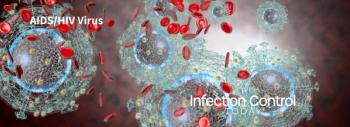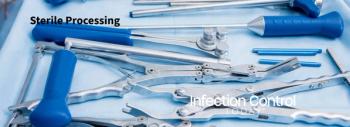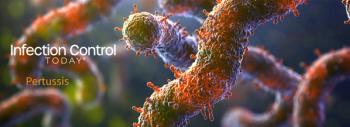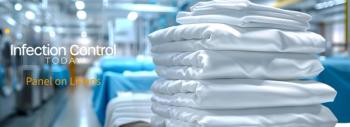
- Infection Control Today, September/October 2025 (Vol. 29 No. 5)
- Volume 29
- Issue 5
Toxic and Tenacious: Disinfection Dilemmas With Candida auris
Candida auris is the pathogen that won’t take a hint—clinging to surfaces, nesting in biofilms, and outlasting rushed wipe-downs. Yet the chemistries potent enough to kill it can be punishing to people, devices, and environments. This piece tackles the tightrope: how to choose, use, and verify C auris effective disinfection without trading one risk for another.
Since the first case of Candida auris in the US in 2013, one thing has remained consistent: how difficult it can be to stop the perpetuation of an outbreak. C auris is an opportunistic pathogen that was first isolated from the ear of a patient in Japan in 2009 and quickly spread around the world.1 Once infected, patients usually become colonized with C auris in the nares or skin, which results in long-term shedding ofthe fungi into the environment. Prior evidence has shown colonization of over 200 days in some patients, which allows innumerable opportunities for this pathogen to spread across health care environments.2
Patient shedding leads to contamination of the patient environment, which, through inadequate hand hygiene and environmental disinfection practices, allows for horizontal transmission through a health care facility. Welsh et al found that C auris was able to survive on plastic health care surfaces for 2 weeks, which can perpetuate outbreaks.3 Additionally, Pacilli et al found continued contamination of patient care equipment like blood pressure cuffs and temperature probes despite the use of a sporicidal disinfectant.4 Invasive devices, such as central lines, can also become colonized and cause long-term infections in patients with such devices. Unfortunately, C auris has multiple mechanisms that allow the pathogen to thrive and survive in the environment.
C auris environment persistence can be due to several factors: It can adhere to and survive on moist or dry surfaces, including medical equipment, patient room surfaces, and even fabrics for days to weeks. It can form a biofilm and has an intrinsic resistance to certain disinfectants. C auris’s ability to adhere to environmental surfaces, medical devices, and even patient skin has been well documented.4-6 This is theorized to be due partly to a newly characterized adhesin named Surface Colonization Factor 1 (SCF1), which differentiates C auris from other Candida species.7 Researchers theorize that this SCF1 adhesin, a molecule found on the surface of bacteria or fungi, allows C auris to bind to surfaces more effectively and makes removal more difficult. Like most other Candida species, C auris can form a biofilm, a community of cells contained within an extracellular matrix.This extracellular matrix provides additional protection to the cells against disinfectant exposure and makes them hardier, allowing them to survive on surfaces even when the biofilm dries.
Finally, C auris is intrinsically resistant to some of the most used health care disinfectants. Prior research showed that C auris was resistant to almost all quaternary ammonium and hydrogen peroxide–based disinfectants.8 Only chlorine-based disinfectants and those with a sporicidal claim were shown to be effective against C auris.
To effectively combat C auris and stop outbreaks before they begin, infection preventionists must ensure the perfect trifecta of people, products, and practices is in place to mitigate transmission. First, all persons should be trained on adhering to transmission-based precautions, including the correct donning and doffing of personal protective equipment to prevent further spread of the pathogen. Second, the appropriate product with a kill claim specifically for C auris should be used when there is a suspected or confirmed case. The contact time, which can vary from 1 to 10 minutes, should be looked up and adhered to. The US Environmental Protection Agency has a list, aptly named List P, which includes all antimicrobial products that have a kill claim specifically for C auris.9
Finally, the personnel responsible for the cleaning and disinfection of surfaces and patient equipment should all be trained in proper practices. The hospital policy or standard operating procedure should do this, and all stakeholders, including nursing leadership, environmental services, and infection prevention, should monitor practices. This helps ensure adherence to utilizing the correct product, dwell/contact time, and order of cleaning. Although preventing transmission of C auris can be difficult, understanding how it is transmitted, using effective disinfectant products, and practicing correct disinfection procedures can prevent outbreaks and protect patients, staff, and visitors.
References
1. Satoh K, Makimura K, Hasumi Y, Nishiyama Y, Uchida K, Yamaguchi H. Candida auris sp. nov., a novel ascomycetous yeast isolated from the external ear canal of an inpatient in a Japanese hospital. Microbiol Immunol. 2009;53(1):41-44. doi:10.1111/j.1348-0421.2008.00083.x
2. Adams E, Quinn M, Tsay S, et al; Candida auris Investigation Workgroup. Candida auris in healthcare facilities, New York, USA, 2013-2017. Emerg Infect Dis. 2018;24(10):1816-1824. doi:10.3201/eid2410.180649
3. Welsh RM, Bentz ML, Shams A, et al. Survival, persistence, and isolation of the emerging multidrug-resistant pathogenic yeast Candida auris on a plastic health care surface. J Clin Microbiol. 2017;55(10):2996-3005. doi:10.1128/JCM.00921-17
4. Pacilli M, Kerins JL, Clegg WJ, et al. Regional emergence of Candida auris in Chicago and lessons learned from intensive follow-up at 1 ventilator-capable skilled nursing facility. Clin Infect Dis. 2020;71(11):e718-e725. doi:10.1093/cid/ciaa435
5. Akinbobola AB, Kean R, Hanifi SMA, Quilliam RS. Environmental reservoirs of the drug-resistant pathogenic yeast Candida auris. PLoS Pathog. 2023;19(4):e1011268. doi:10.1371/journal.ppat.1011268
6. Dire O, Ahmad A, Duze S, Patel M. Survival of Candida auris on environmental surface materials and low-level resistance to disinfectant. J Hosp Infect. 2023;137:17-23. doi:10.1016/j.jhin.2023.04.007
7. Santana DJ, Anku JAE, Zhao G, et al. A Candida auris-specific adhesin, Scf1, governs surface association, colonization, and virulence. Science. 2023;381(6665):1461-1467. doi:10.1126/science.adf8972
8. Haq MF, Pearlmutter BS, Cadnum JL, Donskey CJ. Efficacy of 23 commonly used liquid disinfectants against Candida auris isolates from the 4 major clades. Infect Control Hosp Epidemiol. 2024;45(1):127-131. doi:10.1017/ice.2023.157
9. EPA’s registered antimicrobial products effective against Candida auris (List P). US Environmental Protection Agency. Updated April 1, 2025. Accessed August 5, 2025. https://www.epa.gov/pesticide-registration/epas-registered-antimicrobial-products-effective-against-candida-auris-list
Articles in this issue
Newsletter
Stay prepared and protected with Infection Control Today's newsletter, delivering essential updates, best practices, and expert insights for infection preventionists.






